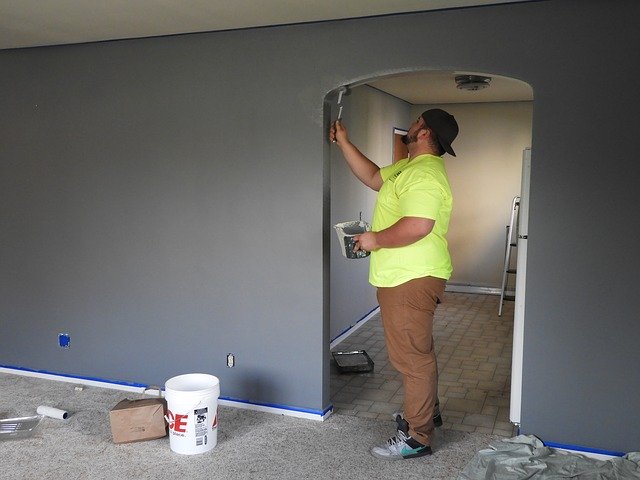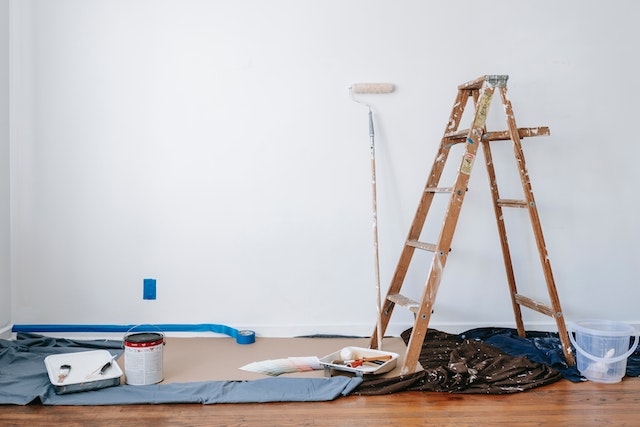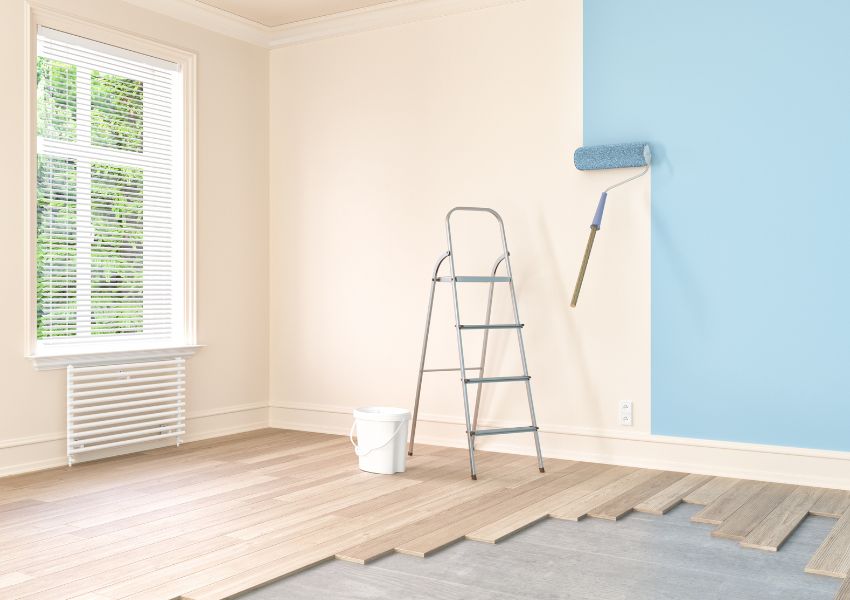Key Takeaways
- Establish Clear Rules and Expectations - If you choose to allow tenants to paint, set specific, written guidelines in the lease or a separate addendum. These should cover approved colors, rooms that can be painted, paint quality requirements, and expectations for restoring the original color before move-out.
- Prepare Your Property with Future Repainting in Mind - Use neutral, easy-to-repaint finishes and avoid textured walls. Document original paint details and consider using one standard color throughout the unit to simplify future touch-ups or repainting.
- Inspect Conditions and Review Insurance Before Approving - Check wall conditions before allowing any painting, and photograph the current state as part of the move-in checklist. Also, review your insurance policy to understand what damage, if any, is covered if tenant painting goes wrong.
Are you prepared for tenants who want to customize your property by painting? It might seem like a simple request, but allowing tenants to change paint colors can lead to a mix of benefits and challenges. As a landlord, you need to weigh the potential for tenant satisfaction against the risks of damage, poor workmanship, or difficult color choices.
Should you say yes, set conditions, or flat-out deny it? The answer depends on your comfort level, the condition of your property, and how prepared you are to manage the outcomes. The Coffey Group put together this article to help you make a clear, informed decision about whether or not to allow tenants to paint your rental property.

What to Consider Before Letting Tenants Paint
Here are some things landlords should think about before allowing their tenants to paint a rental unit:
Decide If You’re Comfortable With Tenant Customization
Not every Florida landlord is open to tenants changing the look and feel of the property. Before setting any policies, ask yourself whether you are okay with tenants making changes. Even if they promise to paint it back, some colors are hard to cover, and not all tenants will follow through.
You also need to consider how involved you'd like to be when it comes to tenant-made changes. Will you want to review color samples, approve the type of paint, or inspect the work? If that level of involvement feels like too much of a hassle, it may be better to keep a no-painting policy in place.
Set Clear Rules About Painting and Customization
If you do decide to allow painting, it’s important to set written rules before the lease is signed. These rules should be included in your lease agreement or as a signed addendum. Be specific about what’s allowed for example:
- Tenants must submit color choices in advance for approval
- Only certain rooms or walls may be painted
- Painting must be done with proper materials and tools
- Walls must be returned to the original color and condition before move-out
Having clear guidelines will protect you and help tenants understand your expectations.

Prep Your Property With Paint Policies in Mind
If painting is going to be a possibility, you should prepare your property in a way that makes future changes easier to manage. This starts with using neutral colors and durable, easy-to-repaint finishes like satin or eggshell paint.
Avoid using textured or specialty wall finishes that are hard to cover. When repainting between tenants, consider using a single standard color throughout the unit. This approach helps simplify touch-ups or full repaints if the Orange Park tenant makes changes. When renting out a property and allowing tenants to paint the unit, it’s also wise to document the original color and brand. Keep samples or records of the paint used so you or the tenant can match it later if needed
Inspect Walls and Surfaces Before Allowing Painting
Before giving permission to paint, inspect the condition of your walls. Look for peeling paint, cracks, water damage, or mold. Poor wall conditions can lead to poor painting results, even if the tenant does a decent job.
Take photos of the current condition and include them in your move-in checklist. This helps you compare the walls when the tenant moves out. It also encourages tenants to be more careful, knowing that the condition is documented. If the walls are not in good shape, you may want to make repairs first or consider whether painting is appropriate at all in that case.

Check Your Insurance Coverage for Tenant-Caused Damage
Many landlord insurance policies exclude coverage for damage caused by tenants. Before you allow painting, review your coverage and see what’s included. Cosmetic damage like stains, improper paint removal, or spills may not be covered under standard policies.
If your policy allows it, consider adding tenant damage protection. It’s also a good idea to require renters insurance from your tenants, although this typically won’t cover property damage to your unit itself. In any case, being clear about what’s covered can help you avoid surprises and give you a backup plan if repainting becomes necessary.
Final Checklist for Allowing Tenants to Paint
Ask yourself the following questions before allowing tenants to paint their rental unit:
- Am I comfortable with tenants customizing the property?
- Have I set clear, written rules about painting?
- Is the property prepared for repainting?
- Have I inspected and documented wall condition?
- Is my insurance covers tenant-caused cosmetic damage?
Bottom Line
Allowing tenants to paint your rental property can be a good way to increase tenant satisfaction and potentially reduce turnover. However, it also introduces risks if not properly managed. By setting clear rules, inspecting your property, preparing ahead of time, and reviewing your insurance policy, you can protect your investment while still giving tenants a bit of freedom.
The Coffey Group has extensive experience helping landlords navigate decisions like these. We offer expert advice, property management services, and leasing strategies that protect your rental and support long-term success. Contact The Coffey Group today. Let us help you safeguard your property while keeping your tenants happy!


